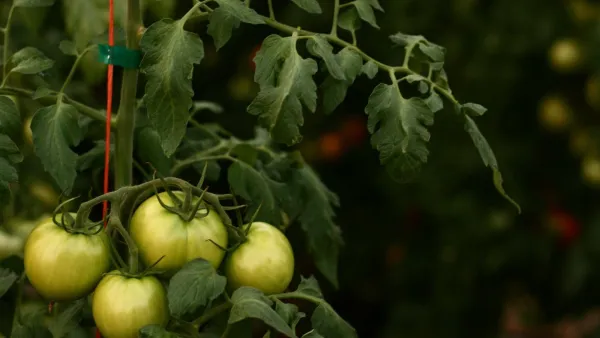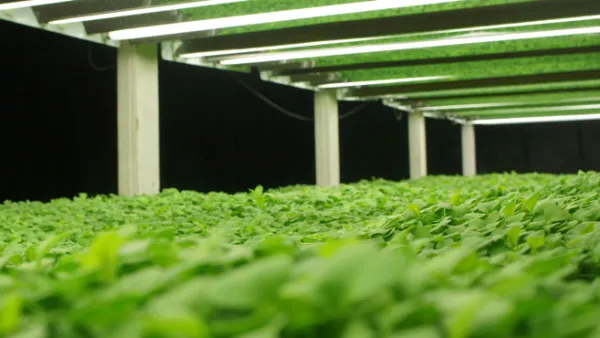Is the idea of "farming up" really taking off? Vertical farming could yield long-term environmental benefits, but still faces many obstacles.
"Want to see where your food might come from in the future?", Owen Fletcher asks, "Look up."
The potential environmental benefits of vertical farming are extensive, claim industry advocates, who believe it can help solve some of the world's most pressing environmental issues, such as contributing to slowing climate change and land reclamation. Abandoned farmlands could improve ecosystem functioning, for example. Advocates also claim that if food is grown closer to cities, trucking transport will not be as necessary, reducing carbon emissions. Indoor farming could also curtail the use of pesticides, and protect crops against traditional weather disruptions, possibly allowing for earlier harvests.
Urban farming pilot projects, and other experimental growth methods and techniques, are sprouting up as far off as Sweden and South Korea, and as close as Chicago and New York. Plantagon, for example, a Swedish company at the cutting edge of vertical farming, plans to create a 12-story, triangular farm in Linköping, Sweden, and other facilities in Shanghai or Singapore.
Still, as a business model, vertical farming has yet to prove itself, and some experts claim that the energy required to operate such facilities may cancel out some of their purported environmental benefits.
Dr. Dickson Despommier, a microbiology professor at Columbia University who developed the idea of vertical farming with students in 1999, and chief adviser to Plantagon, remains optimistic despite acknowledging evident obstacles. "You have to start small and you have to start at the research level before you jump into the commercial aspect of this thing, but that's the way all these ideas start," he says. "Everything we have in this world of ours started out crazy."
FULL STORY: The Future of Agriculture May Be Up

Analysis: Cybertruck Fatality Rate Far Exceeds That of Ford Pinto
The Tesla Cybertruck was recalled seven times last year.

National Parks Layoffs Will Cause Communities to Lose Billions
Thousands of essential park workers were laid off this week, just before the busy spring break season.

Retro-silient?: America’s First “Eco-burb,” The Woodlands Turns 50
A master-planned community north of Houston offers lessons on green infrastructure and resilient design, but falls short of its founder’s lofty affordability and walkability goals.

Test News Post 1
This is a summary

Analysis: Cybertruck Fatality Rate Far Exceeds That of Ford Pinto
The Tesla Cybertruck was recalled seven times last year.

Test News Headline 46
Test for the image on the front page.
Urban Design for Planners 1: Software Tools
This six-course series explores essential urban design concepts using open source software and equips planners with the tools they need to participate fully in the urban design process.
Planning for Universal Design
Learn the tools for implementing Universal Design in planning regulations.
EMC Planning Group, Inc.
Planetizen
Planetizen
Mpact (formerly Rail~Volution)
Great Falls Development Authority, Inc.
HUDs Office of Policy Development and Research
NYU Wagner Graduate School of Public Service



























